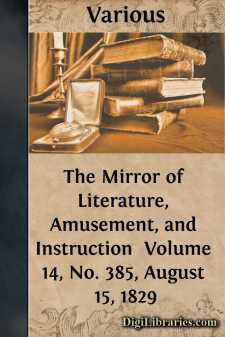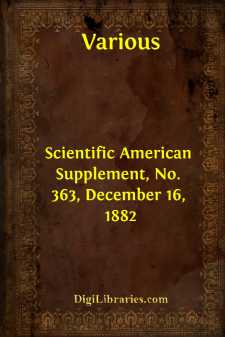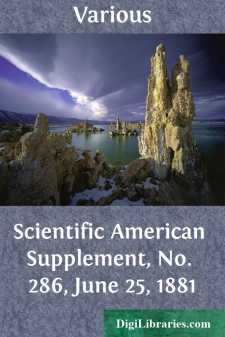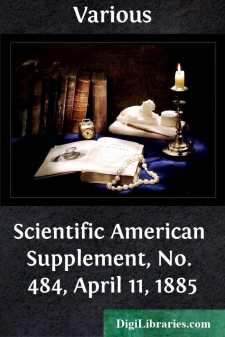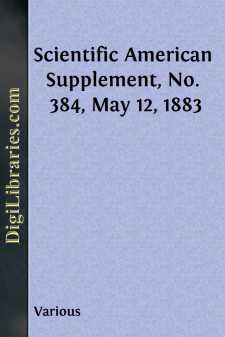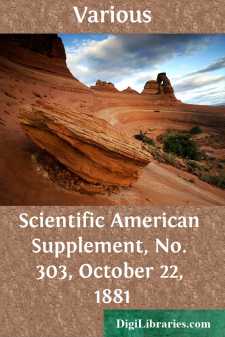Categories
- Antiques & Collectibles 13
- Architecture 36
- Art 48
- Bibles 22
- Biography & Autobiography 813
- Body, Mind & Spirit 142
- Business & Economics 28
- Children's Books 14
- Children's Fiction 11
- Computers 4
- Cooking 94
- Crafts & Hobbies 4
- Drama 346
- Education 46
- Family & Relationships 57
- Fiction 11828
- Games 19
- Gardening 17
- Health & Fitness 34
- History 1377
- House & Home 1
- Humor 147
- Juvenile Fiction 1873
- Juvenile Nonfiction 202
- Language Arts & Disciplines 88
- Law 16
- Literary Collections 686
- Literary Criticism 179
- Mathematics 13
- Medical 41
- Music 40
- Nature 179
- Non-Classifiable 1768
- Performing Arts 7
- Periodicals 1453
- Philosophy 64
- Photography 2
- Poetry 896
- Political Science 203
- Psychology 42
- Reference 154
- Religion 513
- Science 126
- Self-Help 84
- Social Science 81
- Sports & Recreation 34
- Study Aids 3
- Technology & Engineering 59
- Transportation 23
- Travel 463
- True Crime 29
The Mirror of Literature, Amusement, and Instruction Volume 14, No. 385, August 15, 1829
by: Various
Categories:
Description:
Excerpt
HAMPTON COURT.
Here is a bird's-eye view of a royal palace and domain "cut out in little stars." It is copied from one of Kipp's Views in Great Britain in the time of Queen Anne, and affords a correct idea of Hampton Court in all its olden splendour.
The palace is situated on the north bank of the Thames, two miles west from Kingston. It was magnificently built by Cardinal Wolsey. After he became possessed of the lease of the manor of Hampton, "he bestowed," says Stow, "great cost of building upon it, converting the mansion-house into so stately a palace, that it is said to have excited much envy; to avoid which, in the year 1526, he gave it to the king, who in recompense thereof licensed him to lie in his manor of Richmond at his pleasure; and so he lay there at certain times;" but it appears that Wolsey after this occasionally inhabited the palace (perhaps as keeper;) for in 1527, when some French ambassadors were in England, the king sent them to be entertained by the Cardinal at Hampton Court. The preparations for this purpose are detailed in a MS. copy of Cavendish's Life of Wolsey, in the British Museum, and afford the reader some idea of the magnificent taste of the prelate in matters of state and show. The Cardinal was commanded to receive the ambassadors with surpassing splendour; then "my Lord Cardinal sent me (Mr. Cavendish) being his gentleman usher, with two other of my fellows thither, to foresee all things touching our rooms to be nobly garnished"—"accordingly our pains were not small nor light, but daily travelling up and down from chamber to chamber; then wrought the carpenters, joiners, masons, and all other artificers necessary to be had to glorify this noble feast." He tells us of "expert cookes, and connyng persons in the art of cookerie; the cookes wrought both day and night with suttleties and many crafty devices, where lacked neither gold, silver, nor other costly things meet for their purpose"—"280 beds furnished with all manner of furniture to them, too long particularly to be rehearsed, but all wise men do sufficiently know what belongeth to the furniture thereof, and that is sufficient at this time to be said." Wolsey's arrival during the feast is described quaintly enough: "Before the second course my lord came in booted and spurred, all sodainely amongst them proface; at whose coming there was great joy, with rising every man from his place, whom my lord caused to sit still, and keep their roomes, and being in his apparel as he rode, called for a chayre and sat down in the middest of the high paradise, laughing and being as merry as ever I saw him in all my lyff." The whole party drank long and strong, some of the Frenchmen were led off to bed, and in the chambers of all was placed abundance of "wine and beere."
Henry VIII. added considerably to Wolsey's building, and in the latter part of his reign, it became one of his principal residences. Among the events connected with the palace are the following:—
Edward VI. was born at Hampton Court, October 12, 1537, and his mother, Queen Jane Seymour, died there on the 14th of the same month. Her corpse was conveyed to Windsor by water, where she was buried, November 12....


